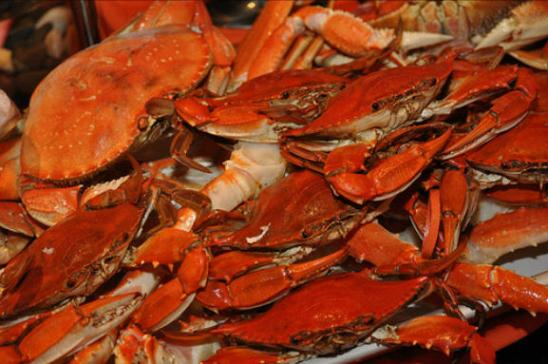Mention Maryland, and images of blue crabs immediately spring to mind. This isn’t just a casual association; it’s a deep-rooted cultural phenomenon. Maryland’s “obsession” with crabs, particularly the Chesapeake Bay blue crab (Callinectes sapidus, meaning “beautiful swimmer that is savory”), goes far beyond simple culinary preference. It’s woven into the state’s history, its economy, its social fabric, and its very identity.
Maryland’s Crab Craze: More Than Just a Meal, It’s a Way of Life

This article explores the reasons behind Maryland’s enduring love affair with the blue crab.
The Chesapeake Bay: A Cradle of Crab Abundance:
The Chesapeake Bay, the largest estuary in the United States, is the key to understanding Maryland’s crab connection. This vast and ecologically rich body of water provides the ideal habitat for blue crabs, supporting a thriving population that has been a cornerstone of Maryland’s culture and economy for centuries (Source: Chesapeake Bay Program, Maryland Department of Natural Resources).
A History Steeped in Crabbing:
Crabbing, both commercial and recreational, has been a way of life in Maryland for generations.
- Early Sustenance: Native Americans and early European settlers relied on the abundance of blue crabs as a readily available food source.
- Commercial Fishing: Commercial crabbing developed into a major industry, providing livelihoods for generations of Maryland watermen. The blue crab remains the most valuable commercial fishery in the Chesapeake Bay, a testament to its economic importance (Source: Maryland Department of Natural Resources, fisheries statistics).
- Cultural Icon: The iconic image of a crab feast – families and friends gathered around newspaper-covered tables, armed with mallets and picks – is deeply ingrained in Maryland culture.
More Than a Meal: The Social Significance of Crab Feasts:
Eating crabs in Maryland is rarely a solitary activity. It’s a social event, a celebration of community and shared experience.
- Family Gatherings: Crab feasts are a common tradition for family gatherings, holidays, and special occasions.
- Community Events: Many Maryland towns and organizations host crab feasts as fundraisers or community celebrations.
- Summer Ritual: Crab feasts are particularly associated with summer, becoming a seasonal ritual for many Marylanders.
- Crab Inspired Foods: Many local restaurants create crab-inspired food.
The “True Blue” Program: Supporting Local Watermen:
Maryland takes its crab heritage seriously. The state’s “True Blue” program is designed to promote and protect the local crab industry. This program certifies restaurants and retailers that sell genuine Maryland blue crab meat, helping consumers support local watermen and ensuring they’re getting the real deal (Source: Maryland Department of Agriculture, True Blue program website).
Beyond the Feast: Crabs in Maryland Culture:
The blue crab permeates Maryland culture beyond the dining table:
- State Crustacean: The blue crab is the official state crustacean of Maryland, a formal recognition of its significance.
- Tourism and Imagery: Images of blue crabs adorn everything from t-shirts and souvenirs to restaurant signs and license plates.
- Festivals: Numerous festivals and events throughout the state celebrate the blue crab and the Chesapeake Bay.
Maryland’s “obsession” with blue crabs is far more than a culinary preference; it’s a deep-seated cultural connection rooted in history, economics, and social tradition. The abundance of crabs in the Chesapeake Bay, the generations of watermen who have harvested them, and the communal joy of crab feasts have all contributed to making the blue crab an iconic symbol of Maryland. From the “True Blue” program to crab-themed festivals and the ubiquitous image of the crab itself, Maryland’s love for this crustacean is undeniable, a testament to the enduring relationship between a state and its most famous natural resource.
Sources:
- Chesapeake Bay Program
- Maryland Department of Natural Resources
- Maryland Department of Agriculture (True Blue program)
- Historical accounts of Maryland’s fishing industry
- Maryland tourism websites and publications

Follow Us!